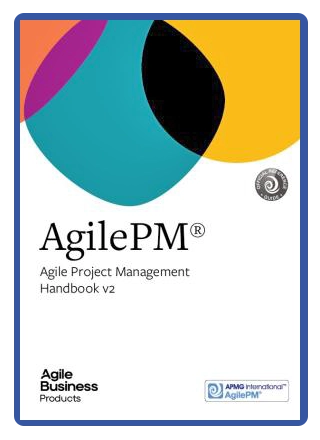Publised On:Mar 17, 2023

Update (11 December 2024):
This article was written in 2023 with Agile Project Management (AgilePM) V2 as baseline. In October 2024, Agile Business Consortium announced the launch of Agile Project Management V3 (AgilePM3). Though parts of the article below are still relevant, the topics covered may not be referring to the latest guidance on Agile Project Management. .
Communications management is all about efficient planning, implementation, monitoring, and regularly reviewing all channels of communication in order to continuously improve the effectiveness of all communications.
As per Agile Project Management Handbook (which is based on DSDM), Agile can be defined as generic description of a style of working, with emphasis on:
While communication has not been explicitly mentioned in any of the above points, it is evidently a very important part of Agile Ways of Working (WoW) since without clear communication the objectives can’t be even understood, let alone being achieved.
As per Agile Manifesto, People and Interactions have value over Processes and Tools. Also Customer Collaboration has value over Contract Negotiation.
Agile Project Management has 8 principles within the framework as following:
While good communication is a fundamental element of collaboration, seventh principle above solely focuses on communicating clearly and without any breaks.
Manager of an Agile Project should achieve the principle “Communicate Continuously and Clearly” by:
There is no denial that the list of main causes of project failure include poor / ineffective communication. Making communication effective requires considerable thought and effort. Many of DSDM’s practices encourage and support effective communication, through verbal communication, pictures, face-to-face conversations.
Documentation, whilst important in some circumstances should not be the default way of communicating. And where used, it should be short and to the point, and only created where it adds value. DSDM and all agile approaches value transparency, so honest and open communication to those stakeholders sitting outside the Solution Development Team is also very important in AgilePM framework.
Agile Project Management emphasises that effective communication:
Effective communication does not happen automatically, like any other project management methodology, Agile Project Management needs the communication to be planned effectively by considering available options, suitable for different circumstances:
Agile Project Manager is also made responsible for ensuring timely and accurate communication to project governance. But also working actively to promote effective and timely communication, which rarely happens automatically. While doing do, be considerate of the communication challenges for the team and assist the team to overcome them most efficiently.
Agile Project Manager should also guide the team on the effectiveness of spoken communication and, where possible, promoting face-to-face as often best option for resolving uncertainty. Agile Project Manager is also expected to maintain their relationship with the project team members (Business Analyst, Team Leader, etc) by regular informal communication and communicating in supportive manner, while also attending the Daily Stand Ups, as an observer, regularly.
Agile Project Management framework strongly believes that much communication happens naturally when team are co-located and a lot of information is assimilated by overhearing team discussions.
Like any other discipline in the world, combined with relevant experience, effective training is the key to successful development of effective communication skills.
Quick Links
Popular Courses
Latest News and Blog
Tecknologia is thrilled to announce our APMG International accreditation for delivering top-notch Artificial Intelligence (AI) Practitioner certification courses.
Agile Project Management (AgilePM®) is the world’s first and the best framework for managing projects using agile tools, techniques and practices. Recently released v3 of AgilePM has Scrum at the core of it, providing the unbeatable combination. &
APMG International Change Management, AgilePM®,AgilePgM® and AgileBA®, AgilePM for Scrum, ABC Scrum Master, ABC Product Owner and the associated Swirl Device logos are all trademarks of the APM Group limited, used under permission of the APM Group Limited. All rights reserved. APMG is the owner of the Accredited Consulting Organisation and Registered Consultant scheme. ITIL®, P3O®, MoP®, M_o_R®, MoV®, PRINCE2®, PRINCE2 Agile® and MSP® are registered trade marks of AXELOS Limited, used under permission of AXELOS Limited. All rights reserved. The Swirl logo™ is a trade mark of AXELOS Limited, used under permission of AXELOS Limited. All rights reserved.
Copyright ©
2026 All Rights Reserved.